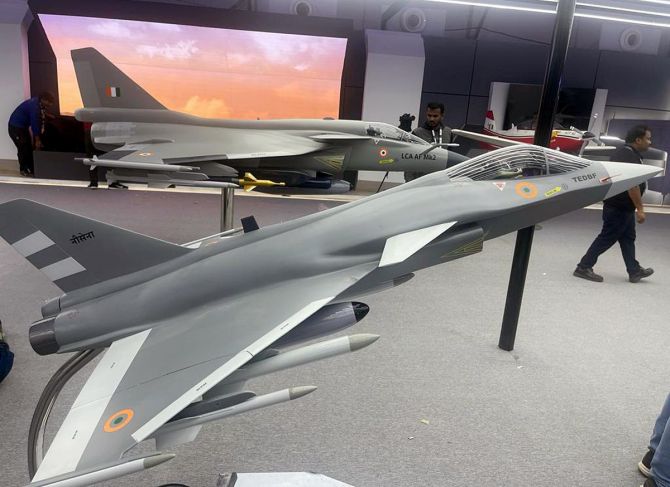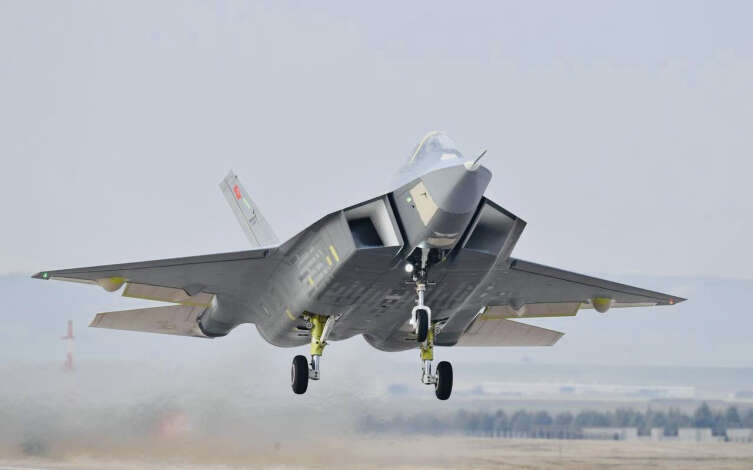In the event of a conflict with China, AMCA deep strikes would target China’s rail and road links with Tibet, isolating the PLA divisions there. The US has its F-22 Raptor and F-35 Lightning II, Russia has its Sukhoi-57, and China has its J-20 Chengdu and J-31 Shenyang — all of them 5th-generation (Gen-5) combat aircraft designed to dominate the skies.
The Indian Air Force (IAF) aims to not be left behind. Building on the experience from the Tejas light combat aircraft (LCA), New Delhi is urging Hindustan Aeronautics Limited (HAL) to collaborate with the Defence Research and Development Organisation’s Aeronautical Development Agency (ADA) to develop an Indian (IAF) Gen-5 fighter, the Advanced Medium Combat Aircraft (AMCA).
Business Standard received an exclusive briefing at HAL Bengaluru on the AMCA project’s progress. HAL’s chairman and managing director, CB Ananthakrishnan, said, “The [AMCA] project has just begun and it is coming along well. We are building in close cooperation with ADA. About 35 to 40 percent of the aircraft has been allocated to HAL to design. The rest of the aircraft is being designed by ADA. There is no third design partner.”
The Ministry of Defence (MoD) is eager to involve private industry at the design and development stage. However, private firms prefer to participate in production programs after design and development are complete to avoid locking in funds during a long gestation period.
The AMCA’s Comprehensive Design Review (CDR) was completed in December 2023. HAL will now develop some systems and build five prototypes — a process that will take four years. HAL officials briefed that the AMCA’s stealth shaping is complete, its design is mature, and its internal systems are fully laid out. The path is clear for metal cutting, symbolizing the start of constructing a flying prototype.
Stealth and Capabilities of IAF 5-Gen Fighter
Stealth fighters are crucial at the start of a war. Nearly invisible to radar, they can fly deep into enemy airspace on ‘interdiction’ missions to strike enemy radar, air bases, and control centers. The ‘air superiority’ thus created allows non-stealthy fighters like Sukhoi-30MKI, Jaguars, and Mirage 2000s to penetrate enemy airspace and strike enemy targets such as roads, railways, airfields, depots, and ground forces without incurring heavy casualties. In a war with China, AMCA deep strikes would target China’s rail and road links with Tibet, isolating the PLA divisions there.

Four advanced capabilities make Gen-5 fighters so lethal: stealth, supercruise, advanced avionics, and powerful radar. The AMCA’s stealth mode conceals fuel and weapons in an internal bay, as carrying them under-wing creates protrusions that reflect radar waves, compromising stealth. In stealth mode, the AMCA can carry up to 1.5 tonnes of munitions in internal weapon bays. In non-stealth mode, an additional five tonnes of munitions and fuel can be carried on external stations.
The IAF AMCA’s primary task would likely be stealth missions, using armament carried in internal bays. On deep penetration strikes, it can carry up to 6.5 tonnes of fuel in internal tanks, sufficient to strike targets 1,000 kilometers inside enemy territory and return to base. In non-stealth mode, with weapons on six external stations, internal fuel tanks can carry an additional 1,200-1,300 liters of fuel, enhancing its capability as a potent long-range bomber.
You may also read this :- India and France Negotiate Deal for 26 Rafale M Fighter Jets
Engine and Production
Another key AMCA design challenge is developing an indigenous, ‘super-cruising’ engine. Until then, the AMCA will be powered by twin General Electric (GE) F-414 engines, which also power the Tejas Mark 2. DRDO officials stated, “The F-414 engine generates up to 98 KiloNewtons (KN) thrust, which effectively degrades to 90 KN in Indian climatic conditions. We have calculated that an AMCA, with the configuration the IAF has specified, requires a thrust of 220 KN (in Indian conditions) for super-cruising. That means it requires twin engines, each generating 110 KN thrust.”
Former defense minister Manohar Parrikar estimated the AMCA would cost about $4 billion to develop, with a significant share going into developing the engine. In 2015, India set up a joint working group with the US to co-develop jet engine technology, but this was scrapped in 2019 due to US export control laws.
With nearly a decade of work and Rs 400 crore invested in the AMCA, responsibilities are being reassigned. The serial production of the AMCA was handed over to HAL’s Nashik division. Ananthakrishnan mentioned a proposal to form a special purpose vehicle with a private sector partner, with ADA and HAL taking a 50 percent stake. However, they have yet to find a suitable private partner. HAL will do the complete structural design of the AMCA, except for the center fuselage, which ADA will design.
“There is no clarity on how these private companies could be chosen. For the time being, the Cabinet Committee on Security paper says to go ahead with 50 percent ownership each with ADA and HAL,” said the HAL chief. “When the private sector firms are ready to join, they can be invited.”


Pingback: Stryker Partnership: India And US Celebrate Major Combat Vehicle Agreement (2024) - DEFENCE AFGHANISTAN
Pingback: Indian Air Force Wants Jaguar Airframes From UK To Keep Fleet Flying (2024) - DEFENCE AFGHANISTAN
Pingback: Top 10 Military Drones Of 2024: Capabilities And Features - DEFENCE AFGHANISTAN